Rules and methods for breeding hyacinths
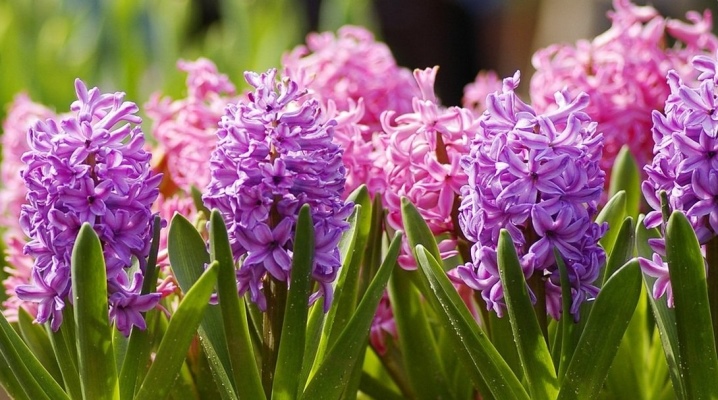
For more than one century, hyacinths have delighted people with their beauty. With their help, you can arrange a flower bed, decorate a veranda or balcony. With proper care, hyacinths can also be grown at home. They attract attention thanks to their bright, dense buds with a pleasant aroma.
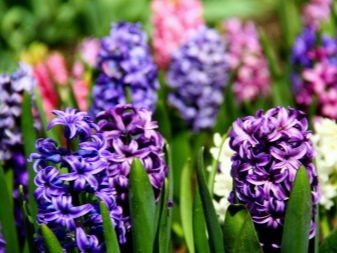

Fundamental rules
The convenience of breeding hyacinths lies in the fact that they can be propagated in three ways at once:
- bulbs;
- seeds:
- sheet.
The choice of this or that method depends on the expected result, timing and complexity of the manipulations. Seed reproduction is one of the longest and most laborious, because flowers from seeds can be obtained on average only after 5-6 years. But this method allows you to develop new varieties and is used mainly by those who are engaged in professional breeding. The most common method for gardeners and flower lovers is the bulbous method. In principle, the planting technology here is quite simple, if you follow the deadlines and give the plant good care.
In turn, the leaf breeding method of hyacinths has its advantages. This way you can get much more planting material. In addition, by taking a shoot from an already adult plant, you can have a complete idea of what will turn out in the end.
After all, when purchasing bulbs, you will have to rely only on an approximate description, and expectations may not always be justified.
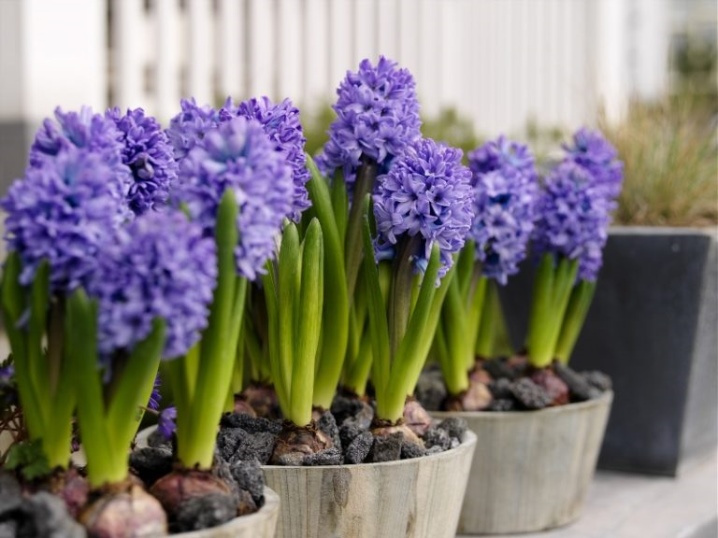
Hyacinths cannot be called capricious, but certain requirements for their cultivation must still be observed. When landing in open ground, you will have to take into account that severe frosts and a long winter can harm them, even if the landing site is insulated for the winter. Therefore, planting in pots and placement in rooms with a constant climate is recommended for the northern regions. The soil in both cases should be nutritious, with neutral acidity and good drainage, since these plants do not tolerate stagnant water well.
And, of course, colorful hyacinths love light, so flower beds should not be shaded by trees and shrubs growing nearby, and the pots are placed on the sunny side. Hyacinths, like other plants, can suffer from diseases and pests. Therefore, the planting material should be treated with fungicides and stored correctly. To make the plant feel good during the flowering period, it needs to be fed.

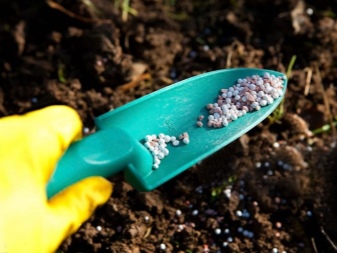
How to propagate with bulbs?
Planting hyacinths with bulbs is the most traditional method. In the middle lane in the ground in the garden or in a flower bed, they are planted in early October. The main thing here is to be in time before the frost, but you should not rush, otherwise, shoots may appear, which will subsequently freeze. This time is necessary for rooting, then the hyacinth will endure the winter well and will delight with its seedlings in the spring.
However, flowers can be grown not only outdoors, but also at home. Usually flowering is timed to some event. In this case, the wintering period will have to be recreated artificially (placed on the bottom shelf of the refrigerator for 12-14 weeks). To make your work easier, you can purchase onions already prepared for forcing. Usually similar information is indicated on the label... It is imperative to pay attention to this, otherwise the flowering time will shift.
The process of selection of planting material is no less important. Bulbs are selected at least 5-6 cm in diameter. Their consistency should be dense, and the surface should be free from damage, stains and other questionable defects. You can prepare the bulbs yourself. In the middle of summer, when leaves begin to dry on dead plants, new bulbs can be dug up, cleaned, dried (preferably in the shade) and stored in a dark, cool place.
And in the fall, they can be safely planted, having previously examined and sorted out.
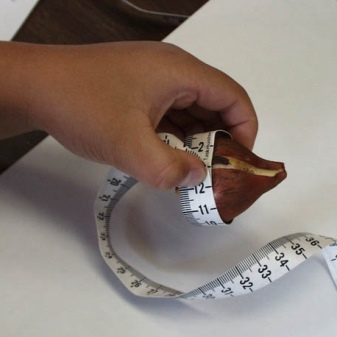
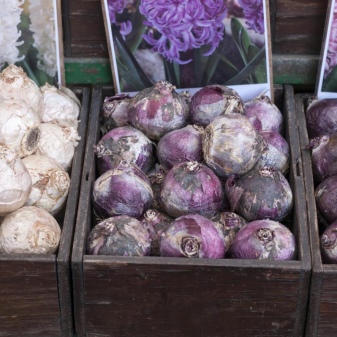
As a rule, a new one forms next to the old bulb, but there is another way to increase their number. Each of them has a bottom with root primordia, if you cut it around the circumference and place it in a cool, dry and well-ventilated place, then after a few weeks small bulbs will appear at the incision site. The process of raising children is quite long. It is also important to separate them correctly so as not to damage them.
Before planting, the soil must be dug up, if it is not loose enough - add peat or sand. Fertilizers (magnesium sulfate and potassium, nitrogen-containing) will be useful, depending on the condition of the soil. Bulbs can be planted with holes or pits to a depth of at least 10 cm with a step of 5-10 cm between them. From above, for the winter period, the flower bed can be insulated with straw or spruce branches. Watering is necessary as it dries, in the summer - every day.
For pots, you can buy ready-made soil or make it yourself. An indispensable condition is the presence of drainage holes. Any pebbles are laid out at the bottom of the container - for example, expanded clay or pebbles, and then the mixture is poured. At home, the planting depth may be less, it is enough to deepen the bulbs by about half. After the end of flowering, the flowering stem, and then the leaves, are removed. To recreate the conditions for rest, you should reduce watering and move the plant pot away from light and heat sources. For forcing, the bulbs can be grown in water (a narrow vessel with a wide neck so that they do not fall through).
In addition to containers with water, vases with decorative stones or hydrogel are used - here you need to make sure that only the lower part of the bulbs is in the water.
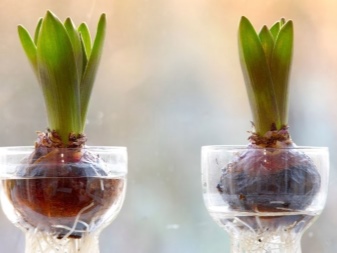
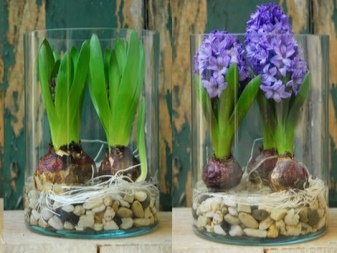
Seed breeding
Despite all the difficulties, the seed method of propagation of hyacinths is available even to amateur gardeners. Of course, the safest way is to collect and prepare seeds with your own hands. For this, it is important to choose the right moment for collection - when the boxes have dried and turned yellow, but have not yet opened. Inside the capsules, in the nests, there are rounded seeds in pairs. Another important point is color. The seeds should be dark or light (depending on the variety), but never green. Then the collected seed is dried well and laid out in paper boxes or sachets.
- Sowing seeds usually starts a little earlier than planting bulbs - around late August or early September. In the southern regions, it can be planted directly on the street - in a prepared flowerbed with soil as for bulbs. In most cases, specially designed containers are used for this - wide containers with pallets.
- Before planting, the soil must be loosened, poured a little into a convenient container. The bed is leveled, and then shallow, frequent grooves are made into which the prepared seeds can be carefully sown. This fit can be quite frequent, but even. The optimum distance is no more than 1 cm. The spread seeds should be sprinkled with prepared soil on top. If the top layer is made too thick, future hyacinths may not germinate.
- To protect from the cold and retain moisture in the soil, the outdoor flower bed should be mulched. At home, it is better to place the container in similar conditions (for example, in the refrigerator) or take it out to the balcony (where it is necessary to carefully monitor the temperature and humidity).
- After 6 months, if done correctly, seedlings will appear. They should also be handled very carefully, no transplant is required. It is better to lightly shade the risen hyacinths, water moderately and remove weeds.
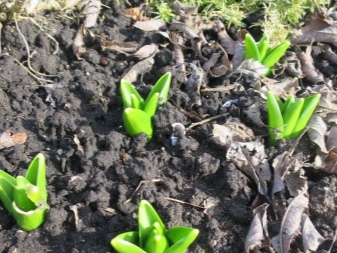

For the first 2 years, the bulbs are so small and weak that they are not dug out - only dried leaves are removed after the summer season and prepared for winter. Then, with the grown bulbs, they do the same as described earlier - they dig it up, and in the second half of the summer they dry it, put it away for storage and plant it in the fall. As they grow larger, the distance between plants increases.
Everything is repeated until the hyacinth blooms. However, the result may be unexpected, and the resulting plants often look different (as opposed to the one from which the seeds were collected).
Despite the laborious process, growing hyacinths can turn into an enjoyable hobby over time.
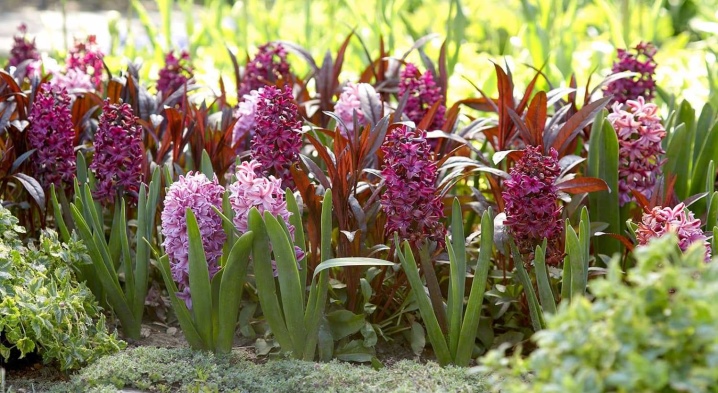
How to grow from leaves?
Another way to get lots of babies is to use leaves. Likewise, hyacinths propagate in the spring when buds form. To do this, you need to follow several steps.
- At the very bottom, at the base of the plant, 1-2 suitable leaves are cut. It will not harm if you follow the precautions. It is necessary to cut carefully - using a sharp knife or blade. It is better to sprinkle the cut on the plant with crushed coal right away so that it does not rot. If you take more leaves, the hyacinth may die. The bottom, thickest part of the sheet is best suited for this, although babies can be obtained from the middle. But the upper part is usually not used.
- The sheet, depending on its length, is divided into 2-3 parts. The lower cut of each is treated with "Kornevin" or any other remedy with a similar stimulating effect.
- The leaves are planted slightly at an angle in sandy soil 2 cm deep, moderately moistened. You can plant several rows at a distance of 3-5 cm. It is better to cover the container with a film on top.
After 1-2 months, the first rudiments of baby onions will appear. By three months after planting, they reach the size of a pea. On average, 3-4 children are tied on each cut, but there may be more. They grow very slowly and for the first 2 seasons they stay where they were planted. In the third summer, they can be dug up and planted. The propagation of hyacinth by leaves is not as troublesome as in the seed method, but it has its own characteristics.
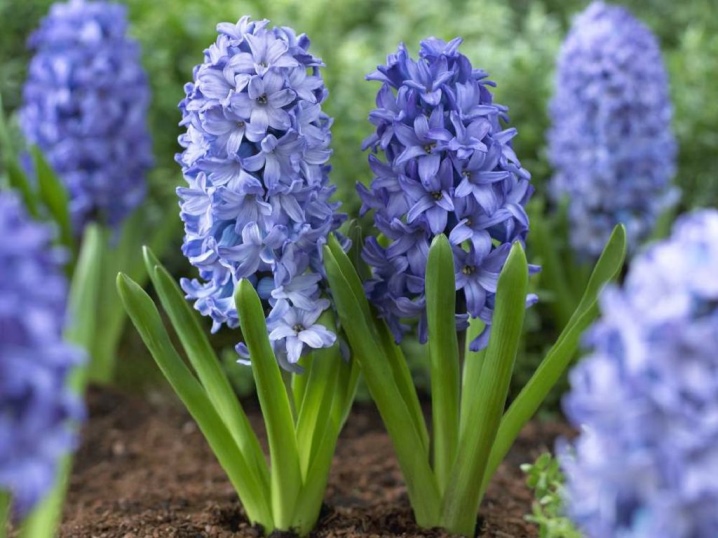
Another way of breeding hyacinths is shown in the following video.







































































































The comment was sent successfully.